China parade to display past and future
- Published

The parade commemorates what China calls "the Chinese People's War of Resistance against Japanese Aggression"
President Xi Jinping will on Thursday preside over an enormous military parade in Beijing in commemoration of China's World War Two victory over Japan 70 years ago. Alexander Neill from the International Institute for Strategic Studies (IISS) examines what we can expect to see.
In an unprecedented show of military might, Beijing has promised never-seen-before firepower on display.
More than 10,000 Chinese People's Liberation Army (PLA) troops and 1,000 honour guards from 17 foreign countries will file past Mao Zedong's portrait, Chinese politburo members and assembled dignitaries on the rostrum in Tiananmen Square.
Nearly 200 aircraft will fly in formation over the crowds. Thirty heads of state and government leaders, including Russian President Vladimir Putin, will attend the parade.
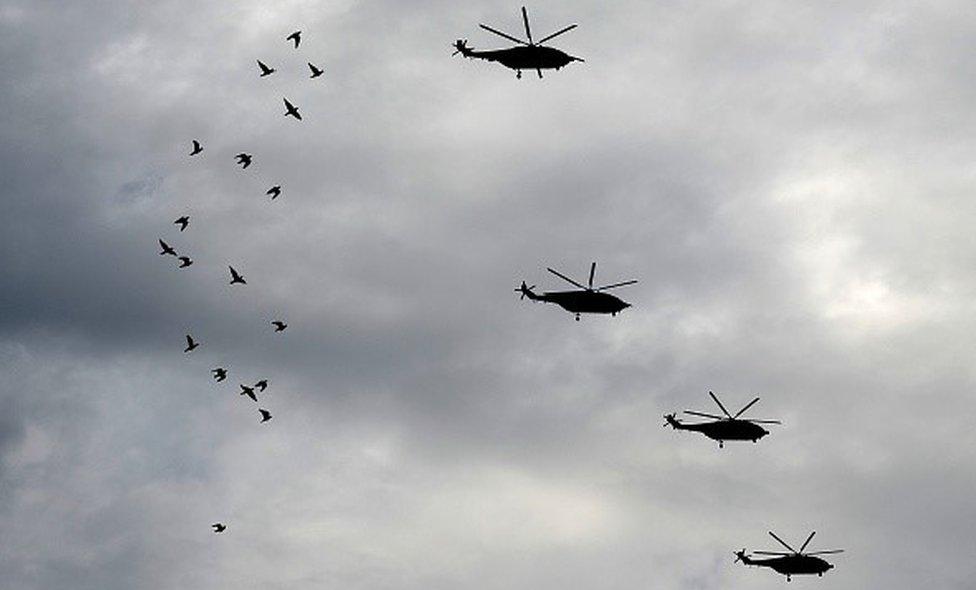
Bombers, fighter jets and helicopter gunships will be on display
Most Chinese commentators believe that the first ever parade marking Japan's defeat is long overdue. The event has been formulated to generate deep historical resonance with the alleged sacrifice of more than 14 million Chinese victims of Japanese imperial militarism.
Mr Xi will present commemorative medals to veterans who fought in what China calls "the Chinese People's War of Resistance against Japanese Aggression".
China's contribution
This parade is a significant opportunity for the world to better understand the huge contribution Chinese forces made to the ultimate defeat of Japan in 1945.
When war broke out in Europe in 1939, China had already witnessed Japanese aggression on its own soil for eight years and had been invaded two years earlier.
According to Chinese state media, of the nearly two million Japanese soldiers killed by the allies during World War Two; 70% of them were on Chinese soil.
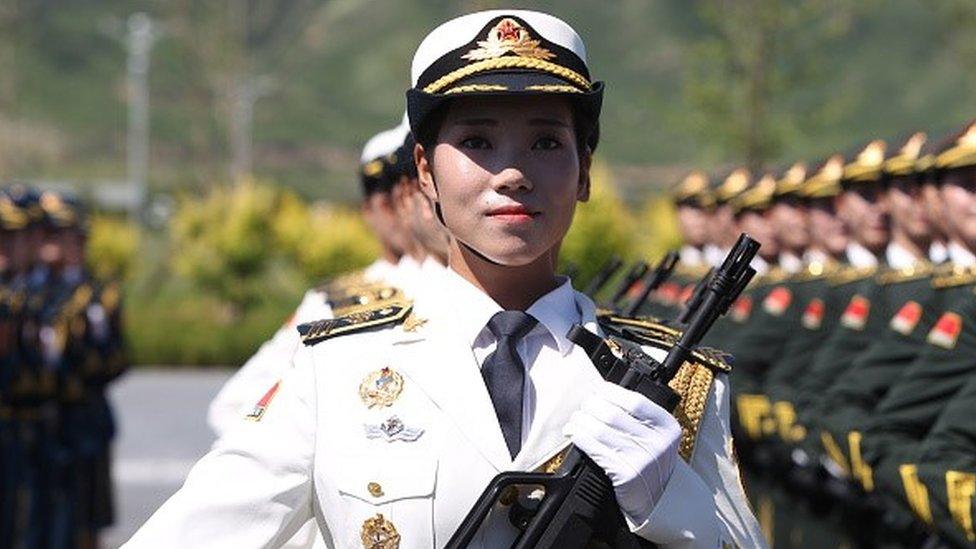
Servicewomen will march in the Chinese honour guard, which recruited women for the first time last year
The parade on Thursday will involve PLA units with histories of combat with the Japanese imperial army. Among them will be the Northeast United Anti-Japanese Force and South China Guerrillas.
Two veteran contingents comprising both communist and Kuomintang (KMT) combatants, many in their nineties, will also be on parade, as will a contingent of descendants of war heroes from that period.
Leading from the front
The PLA has also paid special attention to the role of women in China's armed forces.
Fifty-one servicewomen will march in the Chinese honour guard, which recruited women for the first time last year. Tian Ou - China's first and only female general to join the parade - will lead the formation.
In addition, an all-female medical team named after the Canadian doctor Norman Bethune, who served with China's Eighth Route Army during the war, will be on parade.
Another novel element to the parade will be the presence of more than 50 of Gen Tian's male counterparts in the march-past - literally leading from the front - as opposed to standing with the dignitaries as with past parades.
The Chinese media has reported that with an average age of 53, this cohort of generals have each lost about 11lbs (5kg) in weight in training for the event.
'Carrier killer'
In previous national day parades China has rolled out new weapons systems, but this event will be on a different order of magnitude.
According to Chinese defence sources, more than 500 items of latest Chinese weaponry will be displayed, 84% of which will be revealed in public for the first time.
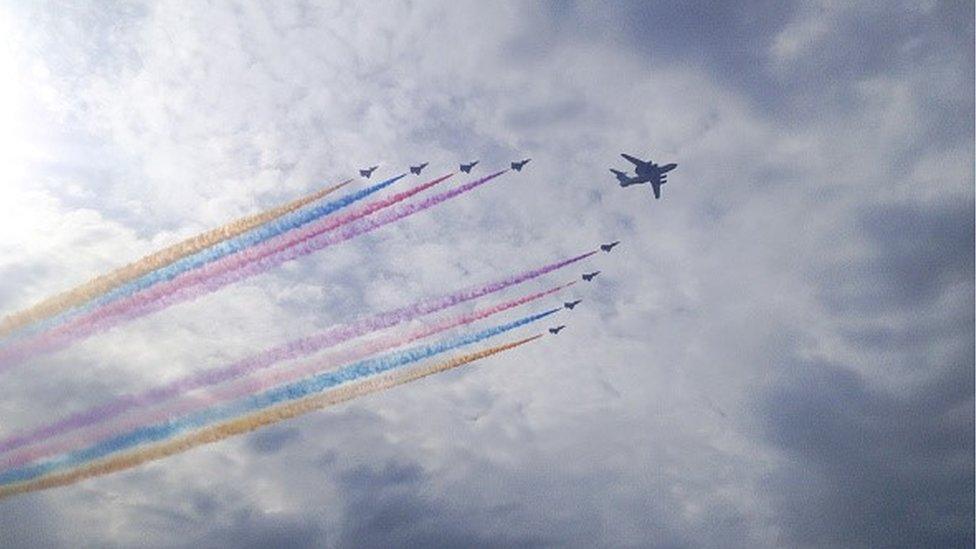
Experts believe it will be an unprecedented display of military capability
The air force will show its latest upgraded long-range bombers, fighter jets, early warning and control (AWACS) aircraft as well as helicopter gunships, while the PLA Navy (PLAN) will display its latest carrier-capable fighter jets and anti-ship missiles.
A special feature of the parade's air display will be an air refuelling demonstration 500m above Tiananmen Square.
Military analysts are anticipating that a large number of China's latest and most sophisticated weapons systems will be on show, including drones, air defence, command and control systems and seven types of ballistic missile.
Pride of place will be the arsenal of the PLA's Second Artillery Force (SAF), the guardian of China's nuclear ballistic missile capability.
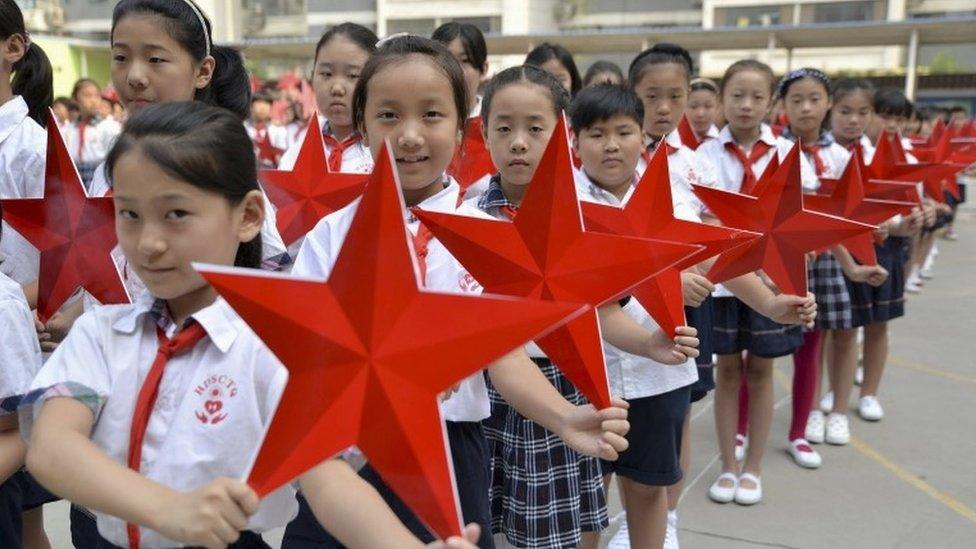
China believes it is the "forgotten ally" for the role it played in defeating Japan
The DF-21D ballistic missile, dubbed the "carrier killer", is expected to be on show, along with the latest variants of China's intercontinental ballistic missile capability.
Such systems are controversial because they could be deployed by the PLA against US and its allies in what the Pentagon describes as an "Anti-Access, Area Denial" (A2AD) campaign.
The US Pacific Command is concerned that such tactics would be designed to keep the US at bay if, for example, a conflict between China and Taiwan were to break out.
Strategic signalling?
The theme of the parade has also courted controversy, with the notable absence of Western leaders.
During a period of strained relations between China and Japan, as well as increasing military tension in the Asia Pacific region, some leaders are reluctant to be associated with what they may view as a nationalistic, anti-Japanese mass rally.
Mr Putin's presence may have also deterred Western attendance. Despite this, the Chinese authorities have been at pains to emphasise that no specific countries have been targeted by the parade.
Some also view the parade as a symbol of China's dissatisfaction with the US-dominated post-war order that China, the "forgotten ally", helped to establish.
Part of President Xi's "China dream" is the creation a new more collective and inclusive Asian security architecture, offering an alternative to the US-led military alliance system introduced after Japan's defeat in 1945.
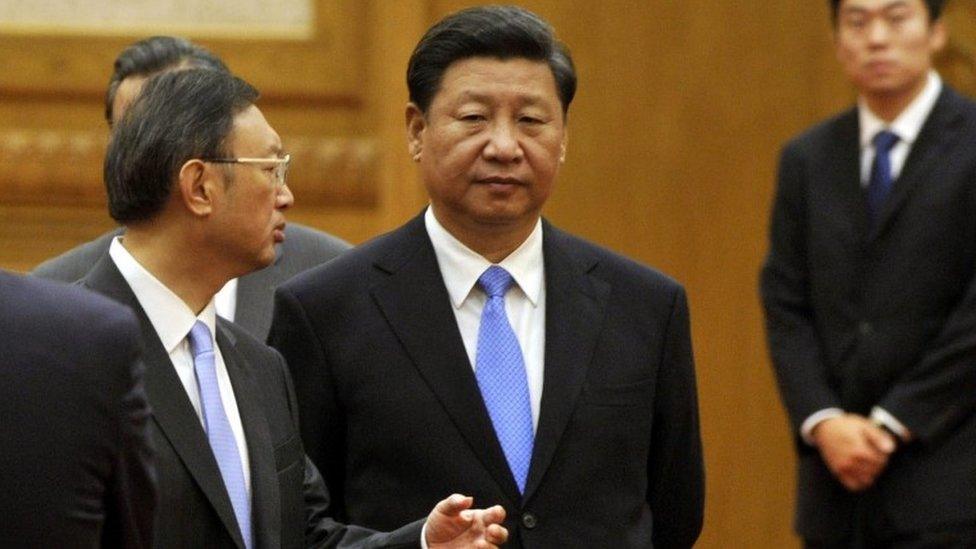
Xi Jinping, the chief of the armed forces, is showing his resolve
At the Shangri-La Dialogue Asia Security Summit in Singapore this year, PLA Deputy Chief of the General staff Admiral Sun Jianguo delivered a similar message, which was also enshrined in China's recent Military Strategy white paper.
The parade thus serves a dual role: a reflection of the past and a signal for the future.
China's official narrative of the horrors of China's wartime past - historical humiliation at the hands of colonial powers - is directly linked to China's current concerns over sovereignty and territorial integrity including the East and South China Seas.
At a visceral level within Chinese society, it is impossible to detach the past from the present. The historical element to the parade and the display of new weaponry thus seeks to embody President Xi's goals of national rejuvenation and deliver a potent warning to any adversary.
But there is also a powerful domestic message at a time of deep economic anxiety for China - Xi Jinping's resolve as the chief of the armed wing of the communist party to protect China's core interests.
Alexander Neill is Shangri-La Dialogue senior fellow
- Published1 September 2015
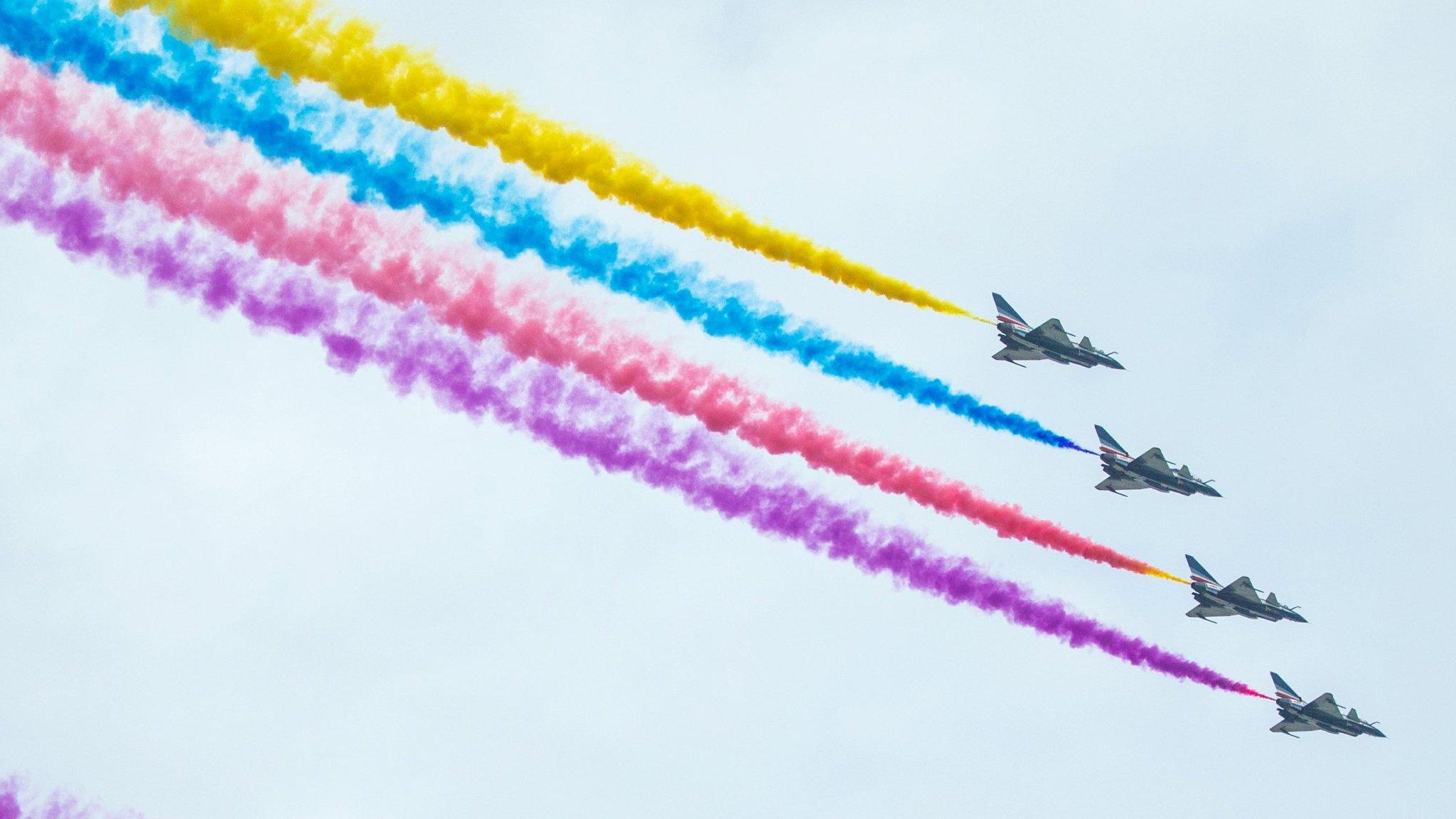
- Published1 September 2015
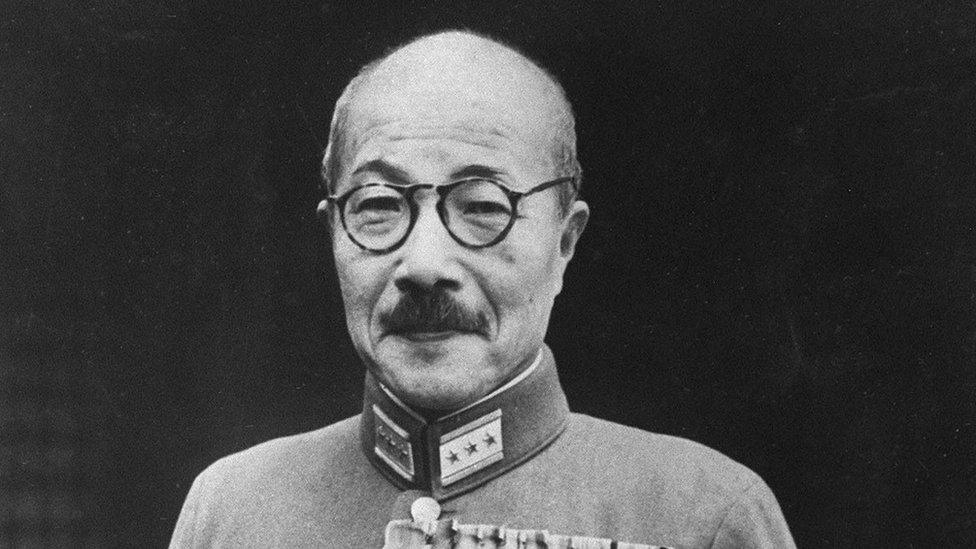
- Published19 December 2014